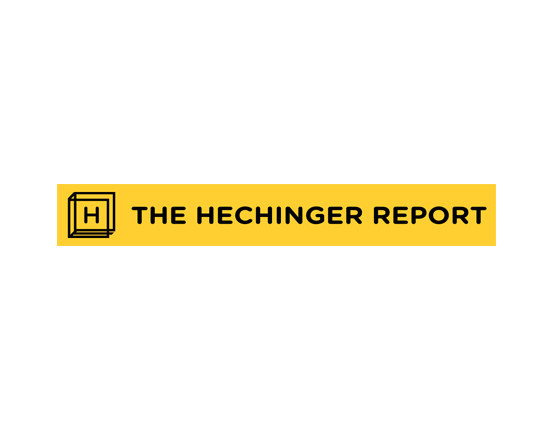In the Media
OPINION: Six Lessons from Louisiana about Helping Students Obtain Federal Aid for College
December 16, 2019
By Amanda Kruger Hill

Young people from socioeconomically disadvantaged backgrounds continue to enter and complete college at much lower rates than their more affluent peers, and rising college costs are one reason why many students can’t access U.S. higher education.
One way to help students and families over this hurdle is through the Free Application for Federal Student Aid (FAFSA). But to receive federal financial aid, students must first complete the forms.
Louisiana has the highest FAFSA completion rate in the country, a dramatic increase from where we were just a few years ago, giving more students access to the federal and university-based financial aid that can determine whether or not they attend college.
What led to such a rise in FAFSA completion in Louisiana? First and foremost, the state made a bold policy change. It was the first state to include FAFSA submission as a graduation requirement for its high-school students.
FAFSA completion is associated with increased college enrollment. On a national level, students in the lowest economic quintile who completed the FAFSA were 127 percent more likely to enter college than students who did not. While it’s true that FAFSA completion and college enrollment are interrelated in many ways, there’s no denying that completing a FAFSA application opens doors for students from low-income backgrounds.
Historically in Louisiana, FAFSA completion rates were lower than the national average. In the 2015-16 school year, the FAFSA completion rate was 56 percent. In 2013-14, an estimated $43 million was left on the table by Pell-eligible high-school graduates in Louisiana who did not complete the FAFSA.
Fast forward to 2019: In just five years, Louisiana has transformed its practices and now has the highest FAFSA completion rate in the country, at 82.6 percent. As a result, far more Louisiana students are able to access financial aid for college.
Through my time spent working closely with high-school counselors and drawing from extant literature on FAFSA completion strategies, I’ve generated a list of key recommendations for policymakers, stakeholders and educators that could dramatically increase students’ access to financial aid and, subsequently, postsecondary education:
First, this type of policy change is a relatively easy way to ensure that students maximize their college opportunities. That’s why more states should make this move. Recently, Illinois and Texas implemented FAFSA graduation requirements. California, the District of Columbia, Indiana and Michigan are considering similar policies.
Second, it is crucial for policy changes to be coupled with support for high-school counselors, students and families. Research shows that high-school counselors can make a critical difference in whether their students complete the FAFSA. However, school-based counselors often have large caseloads and many competing priorities.
In New Orleans, to equip counselors with tools and resources to better support their students in completing the FAFSA, we at the Cowen Institute at Tulane University facilitate a citywide collaborative for high-school counselors, provide professional development on FAFSA completion best practices, run a FAFSA-focused website, and create practical FAFSA resources for practitioners and families. Additionally, we partner with the Louisiana Office of Student Financial Assistance (LOFSA), Louisiana Education Loan Authority (LELA) and many other nonprofits to provide comprehensive support to high-school counselors, students and families.
Third, districts and schools should host FAFSA completion events. Many high schools in New Orleans, and across the country, are now hosting FAFSA completion events where students and families can come and receive support in completing the FAFSA. For example, Abramson Sci Academy combines its big FAFSA completion event with Senior Breakfast, a time when families come to get information about graduation, yearbooks, class rings and so forth. According to Abramson’s Director of College Counseling, Christina Fontenot, planning a FAFSA completion event at the same time as a well-attended, mandatory meeting allowed her to dramatically increase her students’ FAFSA completion rates.
Fourth, use text-messaging and other automated messaging platforms to share critical information with students and families about the FAFSA. Research demonstrates that targeted text messages can increase FAFSA completion and lead to significant improvements in college enrollment and persistence.
Fifth, track data on FAFSA completion and use the data to inform interventions. In Louisiana, high-school counselors can view individual student FAFSA completion reports. This allows them to identify students who have — and who haven’t — completed the FAFSA. New Orleans counselors use the data to provide differentiated support on FAFSA completion.
Sixth, support students who are selected for verification. According to the National College Access Network, 25 percent of students who were selected for verification did not end up completing the FAFSA, which represents an estimated 104,000 low-income students. Organizations like uAspire provide training and tools for counselors to support their students in responding to requests for verification so that they’re able to finish the FAFSA and access financial aid.
A college education is a vehicle for social mobility, and there are well-established economic returns on college attendance for both individuals and society at large, with positive links between educational attainment and life outcomes — including health and well-being, consumer choices, avoidance of criminal activity and marital status.
Thanks to comprehensive and committed efforts at the state, district, school and community levels, more Louisiana students are accessing financial aid than ever before. We have learned a great deal over the past few years. We are hopeful that the lessons we’ve learned are useful to you and your community as you work toward increasing access to higher education for all students.
View original article